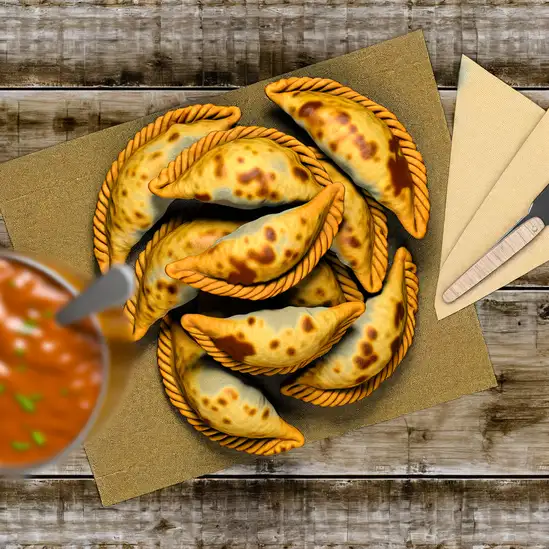


Imagine stepping into a place where the ocean breeze carries a salty freshness that instantly relaxes you,and the sun seems to linger just a little longer on the horizon. That’s Punta del Este for you—a vibrant coastal town in Uruguay that feels both effortlessly chic and warmly inviting. Walking along its beaches,you’ll hear the rhythmic crash of waves mingling with the distant laughter of friends sharing a late afternoon mate,that traditional herbal tea that locals cherish. The city pulses with a laid-back energy,where stylish cafes spill onto sun-dappled sidewalks and colorful street art adds unexpected pops of creativity around every corner. What really makes Punta del Este stand out is its blend of natural beauty and cosmopolitan flair. You can start your day watching fishermen haul in their catch at the harbor,then wander through bustling markets filled with fresh seafood and handmade crafts. As the sun dips,the scent of grilled octopus and smoky chimichurri drifts from open-air restaurants,inviting you to savor the rich flavors of Uruguayan cuisine. The city’s nightlife is lively but never overwhelming—think beachside bars with live music,where locals and travelers mingle under a canopy of stars. Beyond the beaches and buzzing streets,there’s a genuine warmth in the people here. Punta del Este isn’t just a place to visit; it’s a place to feel alive,to slow down and soak in moments that stay with you long after you’ve left. If you’re craving a destination that balances natural charm with a spirited cultural pulse,this is where you’ll find it.
The information on this page is currently being reviewed by Tripkliq and should be used as a guide only
Eng word: Hello
Eng pronunciation: OH-lah
Local language: Hola
Eng word: Goodbye
Eng pronunciation: ah-DYOS
Local language: Adiós
Eng word: Thank you
Eng pronunciation: GRAH-syahs
Local language: Gracias
Eng word: How much
Eng pronunciation: KWAN-toh KWEH-stah
Local language: ¿Cuánto cuesta?
Eng word: Toilet
Eng pronunciation: BAH-nyoh
Local language: Baño
Eng word: Help me
Eng pronunciation: ah-YOO-dah-meh
Local language: Ayúdame
Eng word: Yes
Eng pronunciation: SEE
Local language: Sí
Eng word: No
Eng pronunciation: NO
Local language: No
Eng word: Excuse me
Eng pronunciation: pehr-DOHN
Local language: Perdón
Punta del Este was formally founded on July 5,1907, marking the beginning of its development as one of South America's most luxurious resort towns.
The iconic Lighthouse of Punta del Este, which is still operational, was inaugurated on November 17,1860. It has since become a symbol of the city and a guide for sailors and fishermen.
Casa Pueblo, a unique building designed by the Uruguayan artist Carlos Páez Vilaró, is located near Punta del Este. Completed in 1960, it is both a tribute to the artist's son and a masterpiece of architecture mirroring the Mediterranean style, attracting tourists for its beauty and historical significance.
La Mano (The Hand), a sculpture located on Brava Beach, was crafted by Chilean artist Mario Irarrázabal during the summer of 1982. This intriguing sculpture has become one of Punta del Este's most recognizable landmarks.
Isla de Lobos, situated about 8.5 kilometers southeast of Punta del Este, is home to one of the world's largest sea lion colonies. The island also features a lighthouse that was inaugurated in 1906, contributing to the navigation safety in the region.
Gorriti Island, a natural attraction close to Punta del Este, was historically used as a prison and a military stronghold during the colonial period. Today, it is a popular spot for tourists seeking beautiful beaches and an insight into the local history.
Hotel Remanso, Punta del Este's first hotel, was inaugurated in 1930. Its establishment marked the beginning of the city's transformation into a major tourist destination.
Since its inception in 1951, the Punta del Este International Film Festival has been an important event in Latin American cinema, showcasing films from around the world and elevating the city's cultural status.
Punta Ballena, located just west of Punta del Este, began its development in the mid-20th century. It is renowned for offering some of the most beautiful sunset views in Uruguay and for Casa Pueblo, further establishing the area as a hub for artistic ad cultural activities.
In Punta del Este, the most common Power Adaptor is Type C, Type F, Type L.







Savory pastries filled with a variety of ingredients, such as beef, chicken, or cheese, and baked or fried, popular as a snack or appetizer.

A traditional Uruguayan barbecue featuring various cuts of beef, pork, and sometimes lamb, cooked on a grill or open fire.

A breaded and fried meat cutlet, typically made from beef or chicken, often served with mashed potatoes or a salad.

A sweet caramel-like spread made from slowly heating sweetened milk, commonly used in desserts and pastries throughout Uruguay.


Grilled fish, often caught fresh from the Atlantic, seasoned simply with salt and lemon, highlighting the local seafood.

A hearty sandwich made with thinly sliced beef, mozzarella, tomatoes, mayonnaise, and often topped with bacon, olives, and a fried egg.

A deep-fried dough pastry, often enjoyed as a snack or dessert, especially on rainy days, typically served with sugar or dulce de leche.
Imagine strolling along a sun-dappled Rambla,the salty breeze from the Río de la Plata mingling with the rich aroma of freshly brewed coffee and grilled meats wafting from nearby cafés. That’s Montevideo for you—a city that feels like a warm embrace,where the pace is unhurried but the energy hums quietly beneath the surface. It’s a place where old-world charm meets a laid-back coastal vibe,and every corner invites you to slow down and savor the moment.
Walking through Ciudad Vieja,the historic heart,you’ll hear the clatter of footsteps on cobblestones,the murmur of locals chatting over mate,and the occasional strum of a guitar from a street musician. The colorful murals and colonial architecture tell stories of a city proud of its roots yet open to creative expression. Montevideo’s markets burst with fresh produce,artisanal cheeses,and the unmistakable scent of asado grilling—Uruguay’s beloved barbecue that’s as much a social ritual as a meal.
What makes Montevideo truly special is its genuine warmth. People here have a relaxed friendliness that makes you feel like you belong,even if you’re just passing through. Whether you’re sipping a craft beer in a cozy bar or watching the sunset paint the sky over the coastline,there’s a comforting rhythm to life here that stays with you long after you leave. It’s not just a city to visit—it’s a place to experience,to breathe in,and to carry with you.
Buenos Aires feels like a city that’s alive in every sense — vibrant,passionate,and endlessly inviting. From the moment you step onto its bustling streets,you’re wrapped in a mix of old-world charm and modern energy. The air carries the scent of freshly baked medialunas mingling with the faint,smoky aroma of asado grilling nearby. You’ll hear the rhythmic clatter of tango dancers’ heels on cobblestones,blending with the lively chatter spilling out of cafés and the distant hum of street musicians playing soulful melodies.
Walking through neighborhoods like San Telmo or Palermo,you’ll notice the colorful murals that tell stories of the city’s rich history and rebellious spirit. The architecture is a fascinating patchwork — elegant French-style buildings stand shoulder to shoulder with vibrant street art and quirky boutiques. There’s a warmth in the way porteños (locals) greet each other,a genuine friendliness that makes you feel like you’re part of the city’s ongoing story.
And then there’s the food — oh,the food! Juicy,perfectly grilled steaks paired with Malbec that tastes like it was made just for you. Empanadas bursting with flavor,and dulce de leche desserts that melt in your mouth. Buenos Aires isn’t just a place to visit; it’s a place to savor,to dance,to lose yourself in the rhythm of life. Trust me,once you’ve wandered its streets and soaked in its spirit,you’ll carry a piece of Buenos Aires with you long after you leave.
Imagine stepping into a place where time seems to slow down,and every cobblestone street whispers stories from centuries past—that’s Colonia del Sacramento. The moment you arrive,there’s this gentle,laid-back rhythm in the air,a blend of old-world charm and seaside calm that instantly puts you at ease. As you wander through the historic quarter,your eyes catch the sun casting golden hues on whitewashed walls,while the salty breeze from the Río de la Plata mingles with the faint aroma of freshly baked pastries from a nearby café.
The city’s character is a beautiful patchwork of Portuguese and Spanish influences,visible in its colorful buildings and quaint plazas. You’ll hear the soft murmur of locals chatting in Spanish,the clinking of glasses as people savor a glass of Tannat wine,and the distant hum of boats bobbing gently in the harbor. There’s a warmth here—not just in the weather,but in the way people welcome you,eager to share stories or recommend their favorite spot for a slow,leisurely lunch.
Don’t miss the chance to climb the old lighthouse for sweeping views that stretch across the water,or to lose yourself in the narrow alleys where timeworn doors and blooming bougainvillea create perfect little photo moments. And when evening falls,the city glows softly under lantern light,inviting you to linger over a plate of fresh seafood and a glass of local wine,soaking in the peaceful magic that makes Colonia feel like a place you’ll want to return to again and again.
Imagine stepping into a city where the rhythm of samba pulses through the streets and the air carries a salty breeze mixed with the scent of fresh coconut water. That’s Rio de Janeiro for you—a place that feels alive in every sense. From the moment you arrive,you’re wrapped in a vibrant energy that’s both laid-back and electric. The city’s dramatic landscape,with its towering granite peaks like Sugarloaf and the iconic Christ the Redeemer statue watching over the bay,creates a stunning backdrop that’s impossible to forget.
Walking through Rio’s neighborhoods,you’ll hear the laughter of locals chatting in colorful markets,the distant beat of drums from a street party,and the waves gently crashing on golden beaches like Ipanema and Copacabana. The sun warms your skin as you sip on a caipirinha,the tangy lime and sweet sugar blending perfectly with the tropical heat. Food here is a celebration—imagine feijoada bubbling in a pot,or fresh seafood grilled right by the shore,each bite telling a story of the city’s rich culture.
What makes Rio truly special is its spirit—a mix of resilience,joy,and openness. People here embrace life with a contagious passion,whether they’re dancing during Carnival or simply sharing stories over a late-night meal. It’s a city that invites you to slow down,soak in the beauty,and join in the celebration of life. Trust me,once you’ve felt Rio’s heartbeat,it stays with you long after you leave.
Florianópolis feels like a breath of fresh ocean air mixed with the laid-back rhythm of island life. Imagine waking up to the gentle crash of waves and the scent of salty breeze mingling with the sweet aroma of freshly brewed coffee. This city,perched on an island off Brazil’s southern coast,effortlessly blends vibrant urban energy with the tranquility of nature. You’ll find yourself wandering through colorful markets where the chatter of locals blends with the calls of street vendors selling pastel de nata and freshly caught seafood.
What really makes Florianópolis stand out is its unique character—a mix of traditional Azorean culture and modern Brazilian flair. The streets pulse with samba beats and the laughter of surfers returning from the waves. Beaches like Joaquina and Campeche invite you to sink your toes into warm sand,while hidden lagoons and lush hills offer quiet spots to breathe and watch the sunset paint the sky in fiery hues.
The food scene here is a delicious adventure,too. Picture feasting on a steaming bowl of moqueca,rich with coconut milk and fresh fish,or savoring açaí bowls topped with tropical fruits that taste like sunshine. Whether you’re exploring the lively downtown or hiking through pine forests,Florianópolis wraps you in a welcoming embrace that feels both exciting and comforting. It’s a place where every moment invites you to slow down,soak in the beauty,and fall a little in love with life.
Imagine stepping into Santiago and feeling the pulse of a city that’s both vibrant and laid-back,where the Andes mountains stand like silent guardians just beyond the skyline. The air carries a mix of fresh mountain breeze and the rich aroma of freshly brewed coffee from cozy cafés tucked into bustling neighborhoods. Walking through the streets,you’ll hear the lively chatter of locals,the clinking of glasses in open-air bars,and the distant hum of street musicians adding a soundtrack to your adventure.
Santiago’s character is a beautiful blend of old and new. You can wander through the colorful murals of Bellavista,where art spills onto every wall,then find yourself in a sleek modern plaza surrounded by glass towers. The city’s heart beats in its markets—like La Vega or Mercado Central—where the scent of grilled seafood mingles with the earthy smell of fresh produce,and vendors call out with friendly enthusiasm. It’s a place where you can savor a perfectly grilled empanada or sip on a glass of Chilean Carménère while watching the sunset paint the sky in shades of pink and orange.
What makes Santiago truly special is its warmth. The people are proud and welcoming,eager to share stories over a cup of mate or a hearty plate of pastel de choclo. Whether you’re hiking up Cerro San Cristóbal for panoramic views or losing yourself in the rhythm of a local festival,Santiago invites you to slow down,breathe deeply,and soak in a city that feels alive in every sense.
Scammers install skimming devices on ATMs to steal card information and PINs from unsuspecting tourists.
Tourists may be given counterfeit bills or shortchanged when exchanging money at unofficial exchange locations or with street vendors.
Scammers post fake vacation rental properties online, asking for deposits or full payments in advance, only for tourists to find out the property doesn't exist.
Unlicensed individuals pose as tour guides, charging tourists for subpar or nonexistent tours.
Some restaurants may inflate bills by adding hidden charges or charging for items tourists did not order.
Some taxi drivers may overcharge tourists by taking longer routes or not using the meter.
In crowded areas like beaches, markets, or nightlife spots, pickpockets target tourists' wallets, phones, and other valuables.
Vendors may sell fake or low-quality goods at high prices, claiming they are authentic or handmade.
Uruguay has progressive drug laws compared to many other countries. The possession and use of cannabis are legal for residents, but tourists are not allowed to purchase or consume cannabis legally. Other drugs remain illegal, and possession or use can result in legal consequences. It is important for tourists to respect local laws and avoid engaging in illegal drug activities.
In Punta del Este, as in the rest of Uruguay, smoking is regulated by strict anti-tobacco laws. Smoking is prohibited in all enclosed public spaces, including restaurants, bars, and public transportation. There are designated smoking areas in some outdoor spaces, but it is important to look for signs indicating where smoking is allowed. Violations can result in fines.
Vaping is subject to similar regulations as smoking in Uruguay. It is prohibited in enclosed public spaces and public transportation. While there are no specific laws targeting vaping, it is generally treated the same as smoking, so tourists should be cautious and look for designated areas where vaping might be allowed.
What are other people saying about Punta del Este?
Recent Social posts about Punta del Este
There is nothing to show you for now.